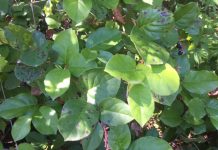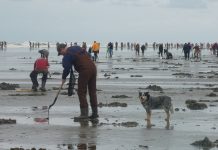By Douglas Scott
 On September 20, 2014, the largest volunteer event in the world will hold its 26th Coastal Clean-Up Day. Dedicated to the improvement of beaches, coastal regions and surrounding areas throughout the world, the International Coastal Cleanup is happening on our Grays Harbor beaches. Due to the extensive media coverage of the 2011 Tohoku earthquake and tsunami, the health of our oceans has surged its way into the national conversation.
On September 20, 2014, the largest volunteer event in the world will hold its 26th Coastal Clean-Up Day. Dedicated to the improvement of beaches, coastal regions and surrounding areas throughout the world, the International Coastal Cleanup is happening on our Grays Harbor beaches. Due to the extensive media coverage of the 2011 Tohoku earthquake and tsunami, the health of our oceans has surged its way into the national conversation.
 In March 2011, a devastating earthquake and tsunami rocked the majority of eastern Japan. Logged in at 8.9 on the Richter scale, the quake sent tsunami waves as high as 100 feet crashing into populated areas, taking lives and washing entire communities out to sea. Not only did the quake alter the earth’s rotation, it also sent millions of tons of trash, plants and nuclear waste into the ocean, soon to be washing up on the west coast of North and South America.
In March 2011, a devastating earthquake and tsunami rocked the majority of eastern Japan. Logged in at 8.9 on the Richter scale, the quake sent tsunami waves as high as 100 feet crashing into populated areas, taking lives and washing entire communities out to sea. Not only did the quake alter the earth’s rotation, it also sent millions of tons of trash, plants and nuclear waste into the ocean, soon to be washing up on the west coast of North and South America.
Since 2011, hundreds of tons of debris have washed up onto Washington’s beaches, a good number of which is from Japan. For two full years, objects that washed ashore were tested for possible exposure to nuclear waste. In a press release by the Washington State Department of Health radiation experts assure us that our coastal areas are safe from radiation, telling us that they have “surveyed, analyzed, and tested thousands of items of marine debris and found no elevated radiation levels.”
 Washington State Department of Health officials continue, “As expected, only the normal low background levels of radiation were found, so state health officials have discontinued random marine debris testing. Debris clearly marked as containing radioactive material will be examined.”
Washington State Department of Health officials continue, “As expected, only the normal low background levels of radiation were found, so state health officials have discontinued random marine debris testing. Debris clearly marked as containing radioactive material will be examined.”
Radiation from the debris may not be an issue anymore, but another threat to the health of our coastline is being watched and monitored. On numerous large objects drifting from Japan, non-native plant and animal life has hitched a ride on the debris, hoping to make our beaches their new home. In Long Beach, a boat washed ashore that still had tropical fish living in it. Up north in Olympic National Park, a 65-foot-long dock washed ashore with 400 pounds of marine plants and animals living on it. Crews quickly worked to successfully stop the invasive species from taking hold.
 As government agency crews continue to do their part, volunteer groups around the Pacific Rim and Washington State have taken hold in coastal communities. Every few months, they hold clean-up parties where volunteers get together and hike the gorgeously stunning beaches of the Pacific Northwest while picking up bags of trash. Hauling out over 300 tons of trash in the last decade, these well-attended events have seen their volunteer numbers grow since 2011.
As government agency crews continue to do their part, volunteer groups around the Pacific Rim and Washington State have taken hold in coastal communities. Every few months, they hold clean-up parties where volunteers get together and hike the gorgeously stunning beaches of the Pacific Northwest while picking up bags of trash. Hauling out over 300 tons of trash in the last decade, these well-attended events have seen their volunteer numbers grow since 2011.
Many of the clean-up events typically fall on Earth Day, organized by the Washington Coast Savers. Created in 2007, with roots back as far as 1971, this group has organized over 10,000 volunteers on clean-ups around the state. On September 20, they might need all 10,000 volunteers and a few more to tackle all the beaches for International Coastal Cleanup Day.
With 37 separate sites around the beaches of the Strait of Juan de Fuca and the Pacific Coast, taking a walk on the beach to keep them pristine and beautiful is something we all should do. These are our beaches, our pride and joy and our health. With much of our economy coming from the health of the oceans, taking responsibility is something we can all do with ease. If you are interested in signing up and joining the International Coastal Cleanup, more information can be found here.
Photos courtesy Washington State Department of Ecology














































